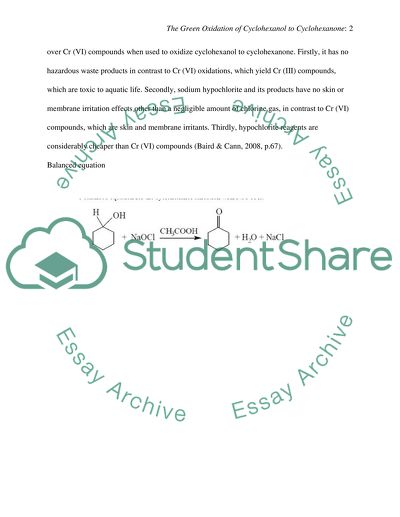Cite this document
(“The Green Oxidation of Cyclohexanol to Cyclohexanone Lab Report”, n.d.)
Retrieved from https://studentshare.org/chemistry/1467874-the-green-oxidation-of-cyclohexanol-to-cyclohexanone
Retrieved from https://studentshare.org/chemistry/1467874-the-green-oxidation-of-cyclohexanol-to-cyclohexanone
(The Green Oxidation of Cyclohexanol to Cyclohexanone Lab Report)
https://studentshare.org/chemistry/1467874-the-green-oxidation-of-cyclohexanol-to-cyclohexanone.
https://studentshare.org/chemistry/1467874-the-green-oxidation-of-cyclohexanol-to-cyclohexanone.
“The Green Oxidation of Cyclohexanol to Cyclohexanone Lab Report”, n.d. https://studentshare.org/chemistry/1467874-the-green-oxidation-of-cyclohexanol-to-cyclohexanone.


